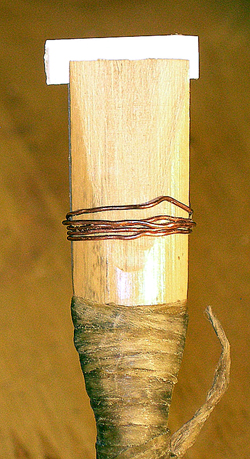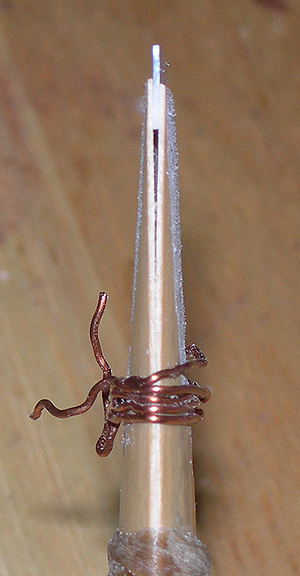 |
 |
Copyright 2010-2012 David C. Daye
One of the factors that makes well-played-in reeds responsive is a free and easy tension holding the two blades together along their edges. If the edge tension is too great, the reed can be a little more resistant and sharp than desired, and the critical lips may gradually settle into an irregular inefficient shape that causes dull tone and resistance.
We can help tight-edged reeds that are still under construction gain some maturity in a short time by inserting a small, thin wedge of plastic or other material between the blades at the tip end for a day or longer depending on the cane and the particular reed.
 |
 |
The crude bridle and irregular tip end in these views show that this reed is not yet finished and fine-tuned. Because this operation can cause the inside edges of blades to warp outward slightly, causing dull tone and resistant response, it should be done before the final voicing when such faults are corrected if necessary by dissembling the reed and resurfacing the interior tips, sanding with fine paper on wide cylinders.
I use .015" thick styrene plastic sheet sold at model railroad supply shops, for both hard and soft cane on Concert D reeds, the same plastic material I use for my artificial drone reed tongues. Use the bridle to set the lip elevation to the opening for moderately strong playing pressure, then insert the wedge as illustrated.
Remove after 12 and 24 hours and check the edge tension by carefully trying to pry the edges apart. Soft cane such as some wild cane can show considerable edge relaxation this soon, especially in damp weather; harder cane such as some Spanish and commercial French bassoon cane may need several days' resting before you see an improvement.